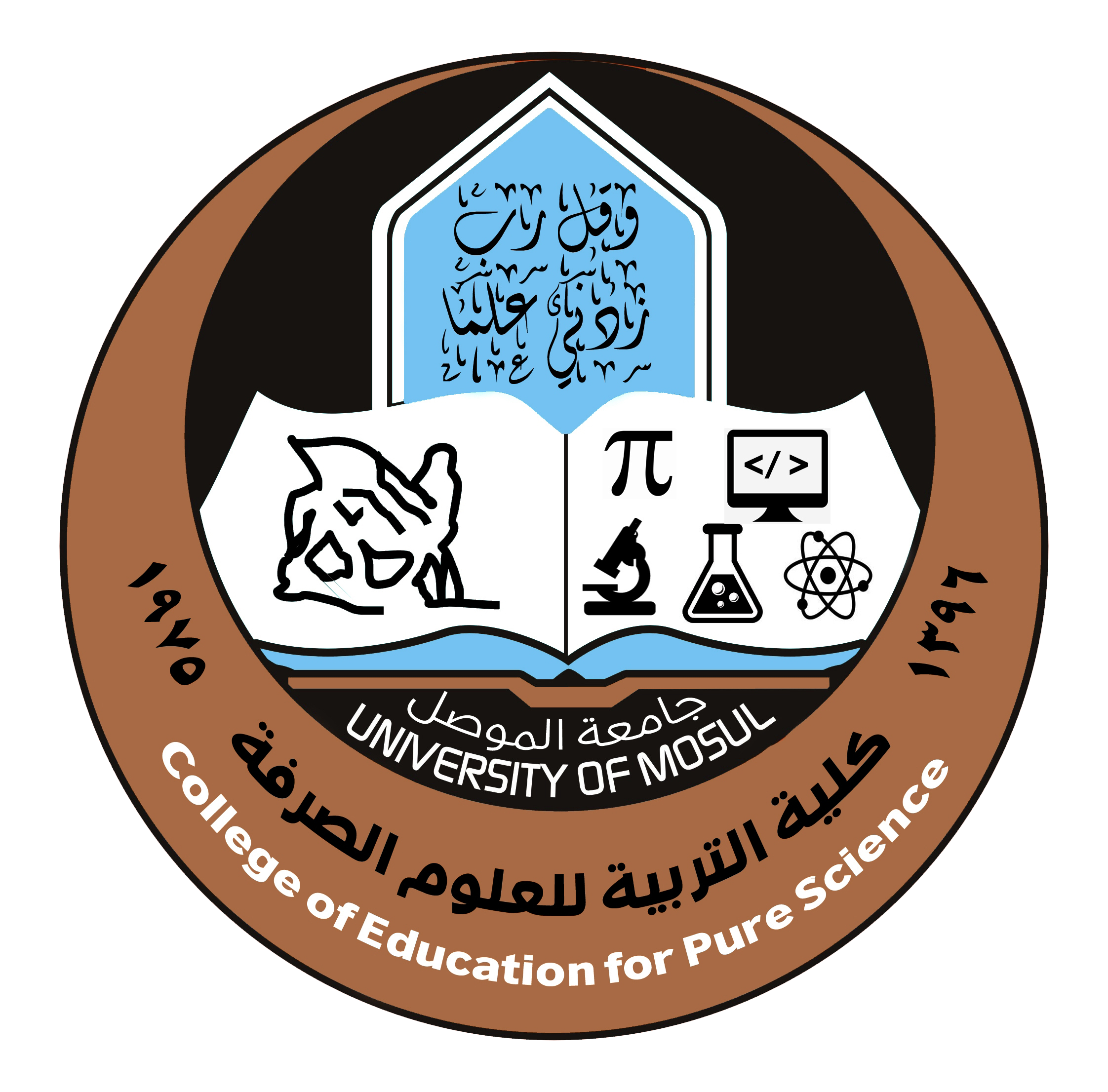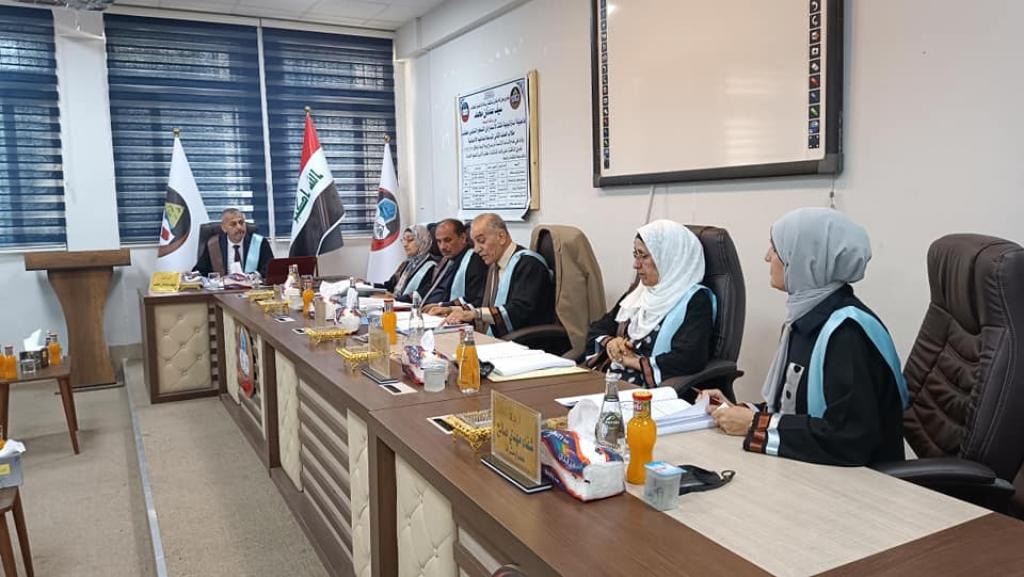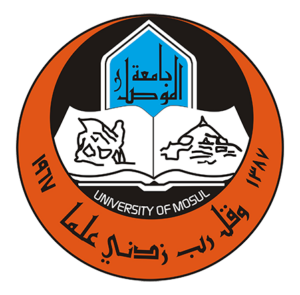23 June، 2022
PH.D. Dissertation Viva-Biology Department

PH.D. Dissertation Viva in the College of Education for Pure Science entitled ” Histopathological and biochemical changes in male white mice treated with chemotherapy drugs and their treatment using some natural product compounds separated from Iraqi wild plants as antioxidants and cancer”The College of Education for Pure Science, University of Mosul, has done the PH.D. Dissertation Viva entitled ” Histopathological and biochemical changes in male white mice treated with chemotherapy drugs and their treatment using some natural product compounds separated from Iraqi wild plants as antioxidants and cancer”,On Thursday, June 23, 2022, the College staff including the respected Dean of the College, Assistant Professor Dr. Qais Ismail Ibrahim, the Honorable Scientific Associate and Administrative Associate, the Honorable Head of the Department of Biology, and a number of the college’s teachers were attended the viva.This study, presented by the PH.D. student Riyadh Khalaf Faris AL-Sinjari in the Department of Biology, Natural products have antioxidant properties that protect healthy cells from the toxicity of chemotherapy as well as increasing their anti-cancer activity. Because of the chemical diversity that distinguishes the natural substances found in plants, it has become necessary to look for effective drugs that are made up of compounds derived from plants that have active efficacy without harming other natural cells. There were three approaches in the current study. The first section of the current study focused on the separation and identification of a number of natural compounds using GC-MS techniques and HPLC from three plants that grow wild in Iraq, namely (Anchusa strigosa, Eminium spiculatum and Gentiana olivieri ), with the results revealing the separation and identification of 40, 40, and 50 compounds, respectively. GC-MS technology was used to separate and diagnose compounds in the three plants, and HPLC technology was used to separate and diagnose phenolic compounds in the three plants. In the Anchusa plant, the compounds (catechol, vanillic acid, gallic acid, rutin and thymol) were separated and diagnosed, and in the Eminium plant, caffeic acid was separated and diagnosed alone, in addition to the two compounds (hydroquinone, gallic acid). The following compounds (hydroquinone, resorcinol, salicylic acid, gallic acid, 4-hydroxybenzoic acid) were separated and characterised in the gentiana plant . The Second Section of study Includs assessment biological activity (DPPH, MTT, and HCS). The in vitro antioxidant activity of phenolic compounds and hexane extracts separated from the three previously mentioned plants was evaluated using the DPPH test. the MTT test on two types of cancer cell lines, namely sarcoma RSAR001 and melanoma A375. The phenolic compounds isolated from gentiana ( hydroquinone , resorcinol , salicylic acid , 4-hydroxybenzoic acid) also had the best effect on the carcinoma line A375, and their cytotoxicity was assessed using the HCS assay. Based on cytological evidence, they appear to cause apoptosis in cancer cells. The third part of the study looked at the effects of dacarbazine and doxorubicin, as well as the combination treatment regimen (doxorubicin + dacarbazine), on biochemical parameters in the blood serum as well as histological and histochemical effects in the kidney, liver, and heart of white mice, revealing the extent of the protective effect of the separated and diagnosed active compounds. before and after chemotherapy, from the flowers of the gentian plant, While the results showed histochemical changes in the groups of mice treated with dacarbazine, doxorubicin and the combination treatment, each of them, according to their experience, as it was observed that fibrosis had occurred in the tissue sections of the liver, kidney and heart stained with Masson stain, and when the tissue sections were stained with PAS-AB stain, it was observed that most of the hepatocytes Renal tubule cells were weakly positive for PAS staining. Hemosiderin deposition was also observed in sections of the heart tissue stained with Prussian blue colour, while when mice were treated with phenolic compounds in combination with dacarbazine in the first experiment and doxorubsin in the second experiment, and when mice were treated with hexane extract in combination with the compound treatment in the third experiment, these changes in tissue components decreased compared to the groups. other treatment. The Viva committee was chaired by Prof. Dr. Adnan Mossa Mohammed, /University of Mosul/ College of Education for Pure Sciences, and the membership of Asst Prof. Dr. Amir Muhsen Mahmood/University of Mosul / College of Education for Pure Sciences, Asst Prof. Dr. Rana Hashim Allosh University of Tikrit / College of Sciences, Asst. Prof. Dr. Mahmood Bashir Mahmood University of Duhok / College of Veterinary Medicine. Asst. Prof. Dr. Mohammed Ghasan Saied/Mosul University/ College of Veterinary Medicine and under the supervision and membership of both Prof. Dr. Muthana J. Mohammed/ University of Mosul / College of Education for Pure Sciences and Asst. Prof. Dr. Ammar Ghanim mohammed University of Mosul / College of Veterinary Medicine.








